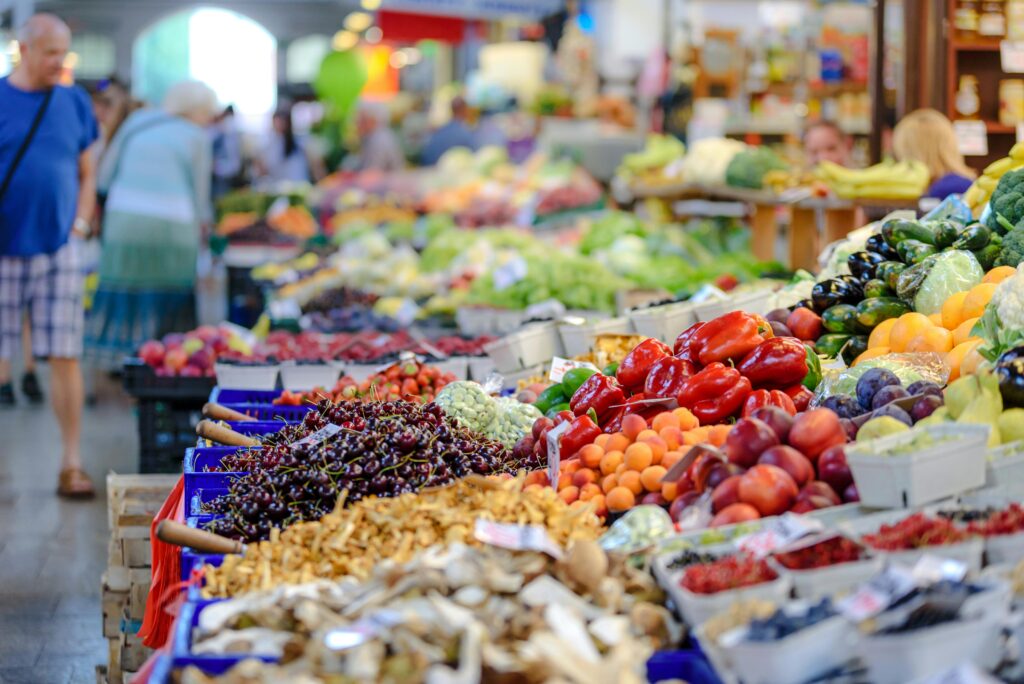You might not associate conscious living with your regular pantry-stocking trips, but there’s actually a lot to gain from being more present and proactive in the grocery store. By taking a bit of time and attention both before and during your shopping, you can be more aware of your choices, make healthier decisions, and reduce impulsive or emotional buying. It can also enhance the overall shopping experience by making you more present and attentive to your surroundings and needs. Conscious living is a practice that can be part of any moment, at any place, while doing anything. Let’s explore some ways we can all be more conscious while grocery shopping.
1. Consciousness
Paying more attention to your choices, and considering the nutritional value and quality of products.
One of the best ways to be more conscious when shopping is to pay extra attention to the nutritional value of groceries. Even if you’re not a nutritionist, you can do this easily by reading labels and checking the nutritional value on packaged foods. Understanding the ingredients within these, along with their calories, macronutrients, and vitamins is important to make sure you’re selecting the best options available within any food category. As a more conscious shopper, it’s also vital to learn about the nutrient density of our foods. By identifying nutrient-dense foods that provide the highest levels of vitamins, minerals, protein, and fiber — along with the fewest calories — it’s easier to make healthier food choices. Examples of these types of foods include leafy greens, nuts, and seeds, and brightly colored, in season fruits and vegetables. Finally, always try to stay up-to-date on nutritional guidelines and recommendations to continue making these informed choices. At the same time, avoid highly processed foods and foods high in added sugars, unhealthy fats, and artificial ingredients. Being conscious of the nutritional value of your groceries is one of the most vital steps we can all take in maintaining a healthy diet.
2. Planning
Creating a shopping list in advance to avoid impulse purchases.
One of the most effective ways to become a more conscious shopper is to write out a shopping list packed with nutritious items, rather than just shopping on the fly. Include a variety of fruits, vegetables, lean proteins, and whole grains. As you drive to the store, mentally plot out where you will conduct your shopping. Simply starting in the fresh produce aisle rather than other parts of the store can be a great way to direct your shopping towards more healthy food options.. When possible, avoid the processed food aisles entirely. If this is unavoidable, at least leave these aisles until the end of your shopping experience as another potential way to help decrease how much processed food you ultimately buy. Lastly, don’t go to the store hungry because it affects how you shop and what you shop for. We’ve all done that enough times to know the consequences. When hungry, you’re more likely to make impulsive choices and buy items not needed or that are less healthy. Hungry shoppers also tend to neglect shopping lists and nutritional goals in favor of immediate gratification. We’ve all been there, and done precisely that. So choose to be more proactive on your next visit, because it’s an easy fix!
3. Budgeting
Staying within your financial means, and not overspending.
Conscious shopping isn’t just about choosing the right foods. It’s also about shopping responsibly. To avoid spending more than you intend when buying groceries, try to always plan ahead and create a weekly or monthly meal plan and shopping list. Then, stick to that list to avoid unnecessary purchases. Set a budget by determining what you can realistically afford for groceries and commit to staying within it. Try using coupons, discounts, and sales to save money on your purchases. Buying non-perishable items in bulk to take advantage of lower unit prices is a great way to stock up and save up! Also, pay attention to unit prices on shelf labels to make more cost-effective choices. Don’t be afraid to steer clear of name brands, either. Often, generic or store brands offer similar products at a much lower price. Getting familiar with these brands can help you save money without compromising quality. Finally, to maximize your budget, always avoid impulse buying. Stay disciplined and resist buying items not on your list or those that aren’t essential, especially pre-packaged and convenience foods which tend to be the most expensive. Instead, opt for cooking from scratch when possible, using seasonal produce. It’ll taste better and is also typically more affordable and nutritious as well.
Remember: being more proactively conscious of your grocery budget involves careful planning, making informed choices, and being disciplined while shopping, but it will help you become a more conscious shopper and also enable you to save more money by reducing unnecessary expenses.
4. Sustainability
Choosing products that align with your environmental and ethical values.
Grocery sustainability refers to the practice of making environmentally and socially responsible choices when it comes to producing, selling, and consuming groceries. It encompasses a wide range of aspects, including:
- Environmental Impact: Minimizing the environmental footprint of the grocery industry by reducing waste, conserving resources, and adopting eco-friendly practices such as sustainable agriculture, packaging, and transportation.
- Ethical Sourcing: Ensuring that products are sourced in a way that promotes fair labor practices, supports local communities, and protects the rights of workers, especially in the case of imported goods like coffee or chocolate.
- Reducing Food Waste: Implementing strategies to reduce food waste throughout the supply chain, from production to consumption, to address this global issue.
- Health and Nutrition: Promoting healthier eating habits by offering a variety of nutritious food options and educating consumers on making better choices.
- Local and Sustainable Sourcing: Supporting local farmers and sustainable agriculture practices, which can reduce the carbon footprint of food production.
Overall, grocery sustainability is another key aspect of more conscious shopping. It’s about making choices that benefit the environment, society, and individual health, both in the production and consumption of food products. It’s a holistic approach to ensuring that the way we shop for groceries aligns with long-term environmental and ethical goals.
5. Gratitude
Appreciating the foods you buy and the resources it took to produce them.
Finally, when it comes to more conscious living, gratitude is one more essential quality we should always keep in mind. In fact, a number of different studies suggest that gratitude may be the single most important practice we can have on a daily basis, especially when shopping. Remember that the ability to buy healthy food is a luxury that many don’t share. Being truly grateful for the ability to eat healthy, readily available foods can remind us of our place in the world, and others who are less fortunate. It can also help to drive us into volunteering, and giving back to communities that struggle with food availability. This is a social responsibility that we can all engage in through philanthropic efforts and community outreach. From food drives, to community gardens, to contributing to meal delivery programs and volunteering in soup kitchens, there are so many wonderful and useful ways we can all volunteer and make a difference to members of our community who are in need.
Whatever strategies you choose, and however you decide to incorporate conscious living into your grocery shopping and food choices, know that the effort is worth it! Every one of us has the ability to make a significant difference in our lives and within our community as a whole. We just have to make it a priority and choose to do it!
For more information on healthy eating and more conscious living, visit the Innergy App!


